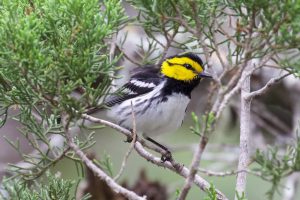Wrens are small, energetic songbirds that rarely sit still. They can sing with impressive volume, and are often one of the loudest songbirds around.
Texas officially has 9 species of wrens. Several are common in backyards and local parks, while others are only seasonal or regional.
Texas Wren Species
Quick Guide to Common Wrens
The most commonly seen wrens in Texas:
| Carolina Wren -chestnut brown | 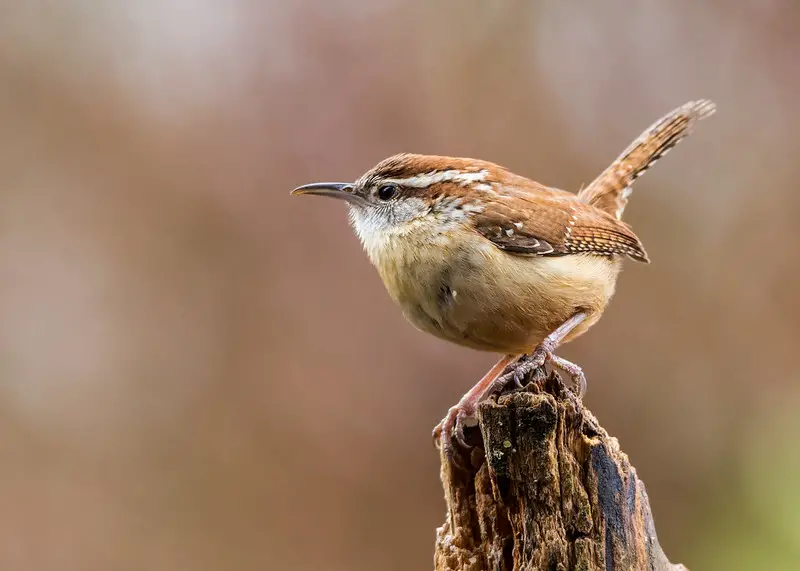 |
| Bewick’s Wren -drab brown & tan | 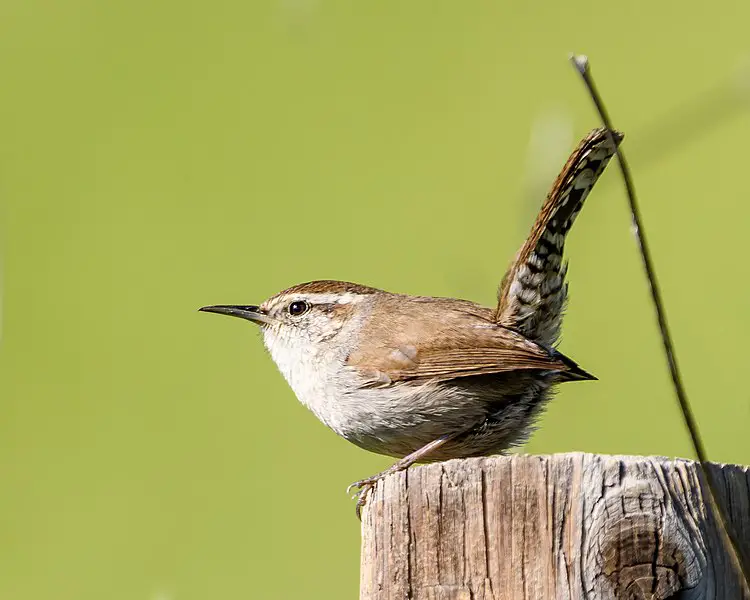 |
| House Wren -lightly speckled | 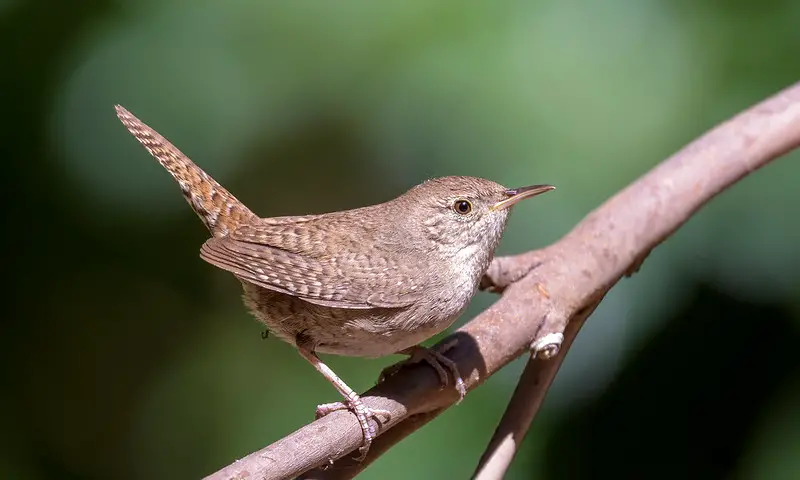 |
Other wrens are not common backyard birds. You may see them at parks and in rural areas, but probably not around your house.
How Do I Know This Bird is a Wren?
Wrens behave differently than other common songbirds (like Cardinals, Chickadees, Titmice) in that they tend to stay low to the ground, and they never sit still.
They spend most of their time foraging for insects by poking through leaf litter on the ground, searching under rocks and logs, and hopping through shrubs and low hanging tree branches.
Wrens are often very noticeable in backyards since they spend much of their time at or below eye level with humans, making them easy to spot when looking out a window.
They don’t always visit feeders since they don’t eat seeds. But suet feeders can draw them in, as well as bird baths.
If you see a small bird low to the ground that’s constantly in motion and never seems to sit still, it’s probably a wren.
Attracting Wrens to your Yard
In addition to food and water, you can also create nesting sites for for these little brown birds.
Hanging properly sized nest boxes (Amazon link) is a great for seeing them up close during nesting season (March – June).
Not only will providing nest sites keep your wrens around all season, but you’ll get to see the little ones follow mom around as they learn to fly and feed themselves.
Creating shelter, like a brush pile, is the cherry on top. Cardinals and native sparrows also love a good brush pile. They’re quite the wildlife magnet.
Simply make a messy stack of twigs, sticks, and small logs about 2 feet tall and at least 3 feet across. You’ll be surprised how interested your yard birds become in their new shelter.
Carolina Wren

- Chestnut red-brown color
- Pale line above the eye
- Common in the eastern half of Texas
Carolina Wrens are likely seen and heard more than any other wren in Texas. They’re common in backyards and local parks, and have a familiar song most people have heard before.
The chestnut red-brown color and white eyebrows are the most helpful clues to identifying this bird.
All wrens are insectivores, eating mostly bugs and small worms, so they don’t always come to bird feeders. However they will often visit suet feeders, mealworm trays, and bird baths.
Carolina Wrens will sometimes build nests during spring and summer months around houses, especially near porches and gardens. Flower pots seem to be a favorite nesting site for them.
If you want to attract nesting Carolina Wrens, or just want to keep them off your porch and out of flower pots, here are two good choices:
Wren nest box for fences and tree trunks (Amazon link)
Wren nest box for hanging (Amazon link)
Bewick’s Wren

- Drab brown on top
- Pale underside
- Common in the western half of Texas
Bewick’s Wrens do well in more dry and less wooded areas than Carolina Wrens. They’re common in west Austin, San Antonio, and most of south and west Texas. Those in Houston and Dallas will rarely see a local Bewick’s Wren.
In backyards they can be seen hopping through shrubs and along the ground, poking under leaves and rocks for insects. They rarely venture more than about 12 feet off the ground.
Traditional seed feeders won’t do much for them since they rarely eat seeds, but they will come to suet feeders. Bird baths can also bring them in.
If you’d like to attract nesting Bewick’s Wrens, the hanging nest boxes tend to work best (Amazon link).
Hang them within a shrubby tree where they have plenty of cover and protection, but keep the hole easily accessible so they can fly in and out. Waist to eye-level is usually a good height.
House Wren
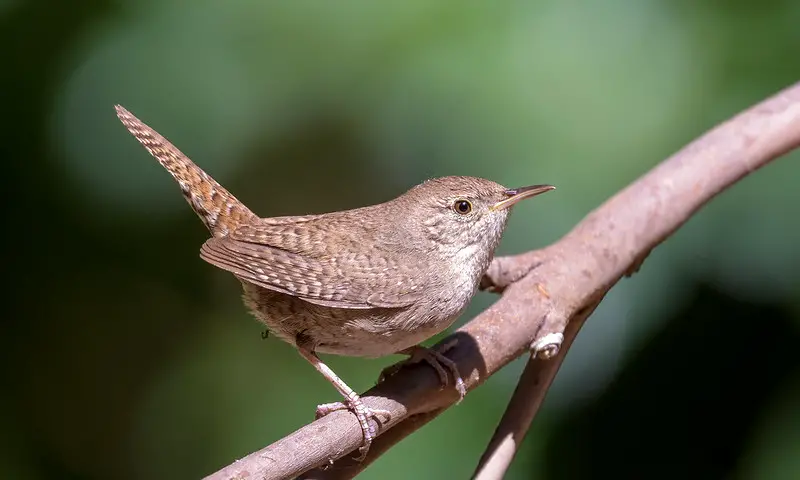
- Tan-brown color overall
- Barring/speckling pattern on the wings and tail
- Only present October through April
The House Wren is the most plain looking wren species in Texas, lacking any obvious markings or coloring. The light speckled barring on the wings and tail is the most prominent feature.
House Wrens often prefer dense undergrowth in wooded areas, or grass in woody shrubland. They hide down and out of sight most of the time, but can still be quite vocal.
Texans may notice House Wrens in their backyards at any time between fall and spring, but especially during migration months.
They suddenly seem to be everywhere during October when they arrive, and again in early April as they depart northward. You may see one moving through shrubby plants around your house on a daily basis during these migration windows, even if you never otherwise see them.
Canyon Wren

- Rich rusty brown color
- Bright white throat
- Found near canyons and rocky areas
Canyon Wrens are named after their preferred habitat. They love rocky outcrops, large steep hillsides and cliffs, and of course actual canyons. The iconic Santa Elena Canyon in Big Bend National Park is always alive with the songs Canyon Wrens.
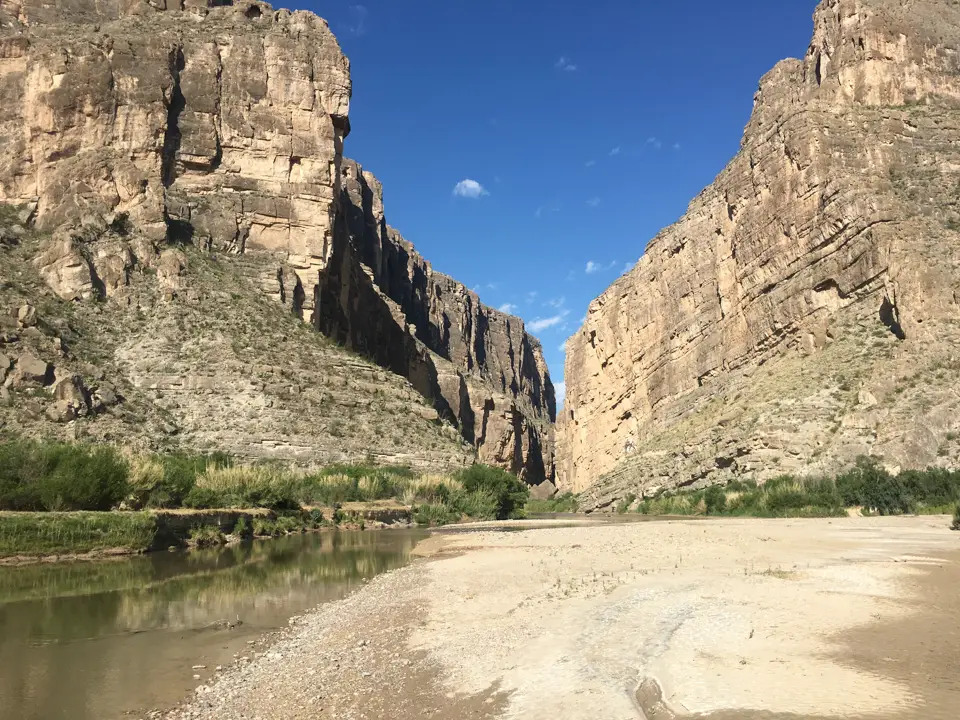
Most Texans won’t see this bird near their house, since the habitat is so specific. Canyon Wrens are a western species, found from west Austin and San Antonio all the way out to El Paso.
Their song is possibly the most easily recognizable of all the wrens, and is a favorite song of many bird watchers. It often sounds like gleeful laughing, like they’re always telling a good joke.
Rock Wren
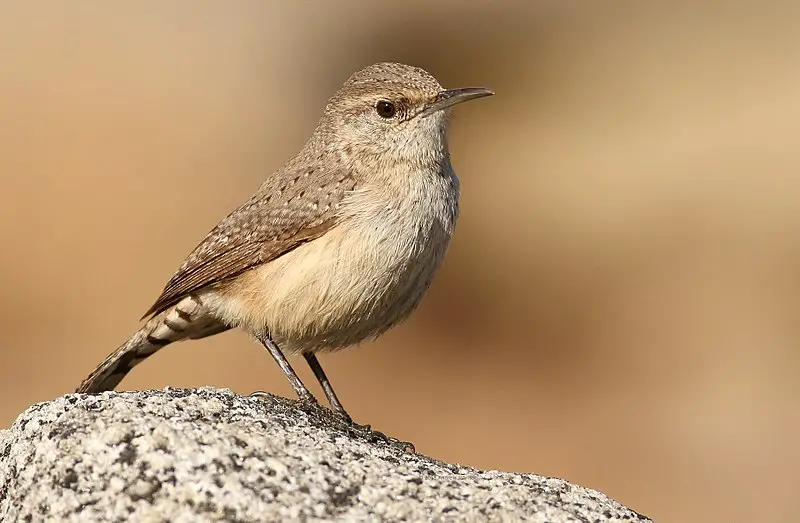
- Back is brown with fine speckling
- Underside is pale with orange hue on belly
- Found on bare rock like cliff sides and small canyons
Rock Wrens are uncommon in most cities, and therefore unfamiliar to most Texans. Arid west Texas is the best place to find them, but they can be found as far east as San Antonio, Austin, and Fort Worth.
Areas with expansive bare rock can attract Rock Wrens. In cities, the slopes of dams at large lakes are often filled in with huge piles of rocks. This is often the best place to look for Rock Wrens within cities.
They often do an up and down “pumping” or bouncing motion with their body, as if doing push ups, or quick squats. Atop a bare rock or ledge is their favorite perch, where they can see everything.
Habitat and range is similar to Canyon Wrens, which are almost always more common. Be sure to differentiate the two, and remember that Canyon Wrens are much darker and bold in color.
Winter Wren
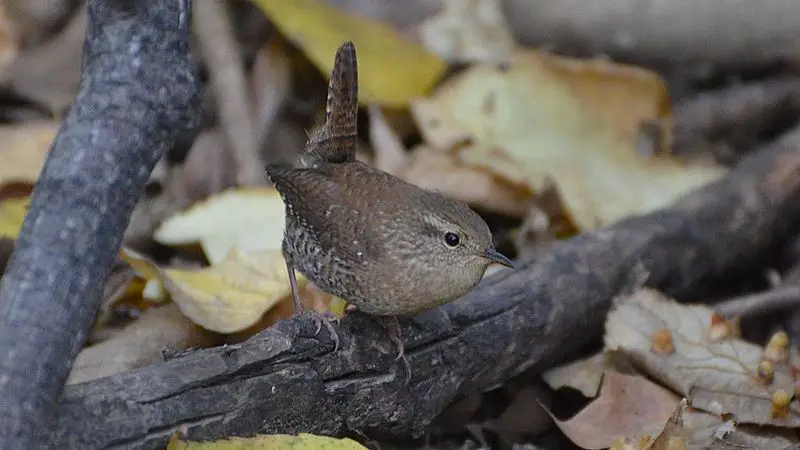
- Present in Texas late October through March
- Dark brown with barring on the sides
- Short stubby tail, often pointing straight up
Winter Wrens like wooded areas with plenty of canopy cover. They hop along low in the shade, often in quick spastic movements, searching for insects and food.
The super short tail is often the giveaway for this species. Often cocked straight up in the air, the stubby stiff tail combined with the especially dark body color differentiates it from the similar House Wren.
Also pay attention to the darker color on the back, especially close to the tail.
These small wrens can be found throughout most of Texas, but are only common in the eastern third of the state. Woodlands outside of Dallas and Houston during winter are great places to search.
Marsh Wren
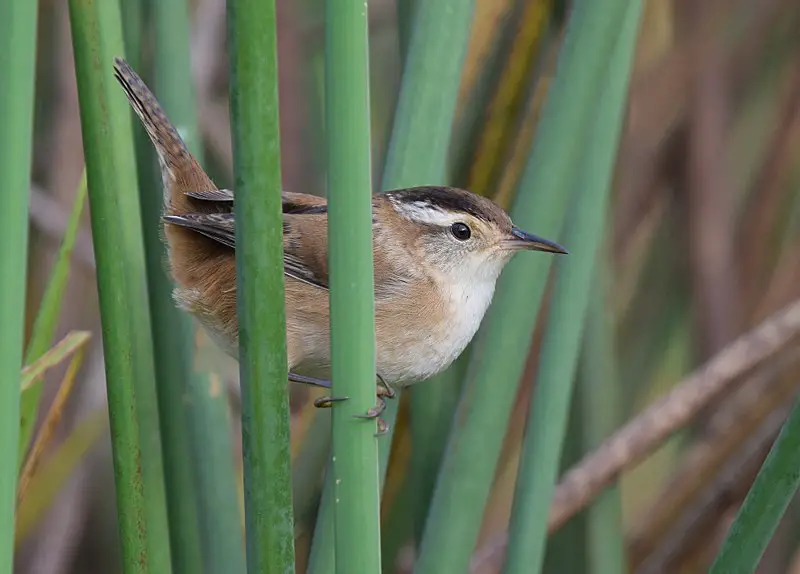
- Common in wetlands and marshes
- Present in Texas October through April
- More often heard than seen
The bubbling chatter of the Marsh Wren is a familiar sound near most bodies of water with vegetation along the edges.
Marsh Wrens love cattails and tall grasses that grow along water. Freshwater pond and lake edges are great places to find them, but they’re especially abundant in coastal marshes along the Gulf of Mexico.
They usually hide down low in vegetation, making them difficult to see. But their energetic vocals give them away, especially during morning hours when they’re more active.
Even when they are visible, they’re typical wren behavior of rarely sitting still is evident. Quick flashes of their back or side may be all you get as they weave in and out of the reeds.
Sedge Wren
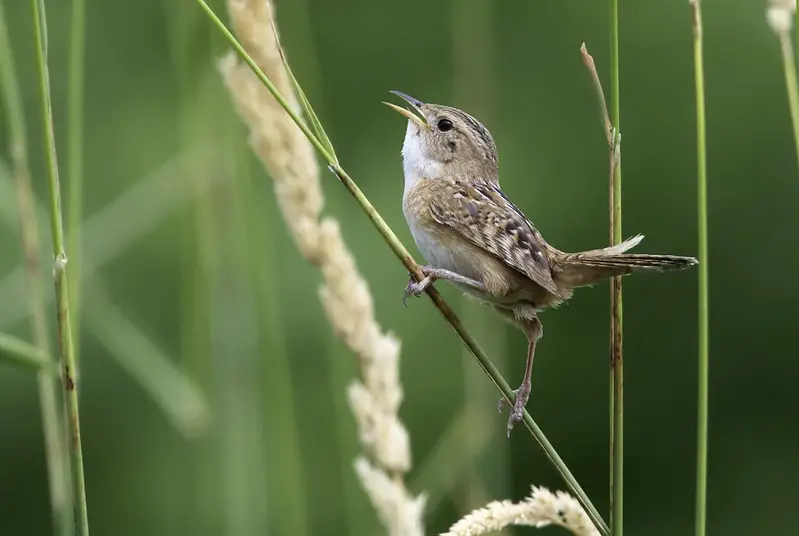
- Present in Texas October through April
- Common along the coast
- Restricted to marshes and high quality grasslands
Sedge Wrens are similar to Marsh Wrens, but dialed up a notch. Their plumage is more plain and camouflaged, their behavior is more secretive, and their habitat is more specific.
Like Marsh Wrens, Sedge Wrens are heard more often than seen.
Sedge Wrens can be abundant in coastal marshes, but are usually uncommon elsewhere. Great places to find them include the national wildlife refuges on the gulf, like Anahuac NWR and Aransas NWR. Sedge Wrens will often outnumber Marsh Wrens here.
Away from the coast Sedge Wrens become more sparse and tricky to find. They like high quality grasslands in the eastern third of Texas, especially in the general Houston area.
Reliable inland spots to find them include:
- Brazos Bend State Park (Houston)
- Attwater Prairie Chicken NWR (Houston)
- Katy Prairie Conservancy (Houston)
- Veteran’s Park (College Station)
- Rochester Park (Dallas)
- Village Creek Drying Beds (Arlington)
Sedge Wrens are uncommon in central Texas, especially once you hit the Edwards Plateau. They’re occasionally found around Austin, and rarely in San Antonio.
Cactus Wren

- Largest wren in Texas
- Desert species common in west Texas
- Prefers dry shrubby areas
The Cactus Wren is an iconic species of the American Southwest, and it’s song is one of the most recognizable sounds of the Chihuahuan desert. South Texas also hosts strong numbers of Cactus Wrens, especially the western counties along the Rio Grande.
These large, dark colored wrens are often active but usually more calm than the smaller wrens like Bewick’s Wrens. Cactus Wrens will sometimes perch atop a shrub or cactus to project their song, or to survey their surroundings.
Most Texans in the larger cities won’t ever see a local Cactus Wren since they’re too far east, except for residents of El Paso and McAllen. But once you head west they suddenly seem to be everywhere!
Easy places to see Cactus Wrens include:
- Big Bend National Park
- El Paso
- Midland-Odessa Area
- Del Rio & Lake Amistad
- Laredo



